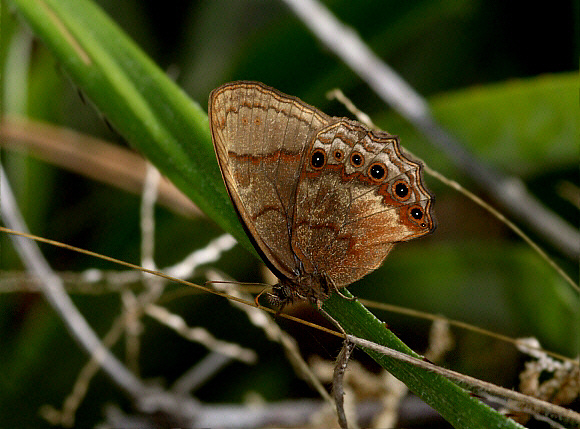
Introduction
All 562 species in the subtribe Pronophilina are high altitude cloudforest species, and all are confined to the neotropics. The vast majority are found in the Andes mountains, but there are 4 known from the Atlantic cloudforests of Brazil, and 6 that are endemic to Guatemala, Costa Rica or Mexico. More oddly there is one genus Calisto that is restricted to the Caribbean islands of Cuba and Hispaniola.
There are 32 known species in the genus Eretris, distributed variously from Mexico to Bolivia. This figure includes 15 species that have only recently been discovered and have not yet been assigned scientific names. Unlike Manerebia the hindwings of Eretris have wavy margins. The undersides of Eretris are traversed by a series of wavy dark-edged reddish-brown lines, and have well developed submarginal ocelli on the hindwings.
The image above has been examined by Pyrcz who states that “although the systematics of Eretris in central and southern Peru needs solid updating and there are several new species, this individual appears to be subrufescens, a female”.
Eretris subrufescens is distributed from Colombia to Peru. The type specimen supposedly originated from Costa Rica but DeVries considers this to be a mis-labelling error.
Habitats
This is a high altitude cloudforest species, occurring at elevations between about 2000-2600m.
Lifecycle
The larval foodplants are believed to be Chusquea bamboos.
Adult behaviour
All Eretris species are very sedentary in behaviour, and have a slow lethargic flight. They are most often encountered at rest among grasses, or when imbibing dissolved minerals from decomposing fruits and fungi.
